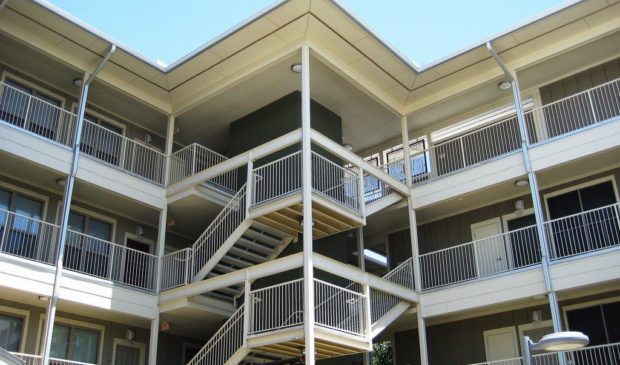ULI sees progress on affordability, with drawbacks, in latest LDC draft
Monday, December 2, 2019 by
Chad Swiatecki Urban Land Institute Austin has weighed in on the draft Land Development Code, with a white paper that asserts the city’s proposed changes in housing types, design standards and affordable housing programs won’t go far enough to add enough new housing to make the city more affordable.
The paper, which was released earlier this month, was written by members of the professional organization’s Code Rewrite Workgroup, which has analyzed previous drafts of the code that is informed by the Imagine Austin plan completed in 2012. Breaking the code into 16 subject areas that were analyzed by architects, planners and other housing industry professionals, the paper looks at how the most recent changes match up with stated goals of the city’s Strategic Housing Blueprint to create 135,000 new homes priced at 80 percent or less of the area’s median family income.
Robert Parsons, founder and principal planner of GH Townbuilders and co-chair of the working group, said he is encouraged the code appears to allow for more housing types such as townhomes and other multi-unit formats that have been largely restricted in Austin since the 1980s. Another positive is the provisions in the code intended to make it easier for administrators and the public to use it without extensive interaction with city departments, which he said should reduce the administration costs that add to the price of development, and thus, home prices.
Parsons said he and others in the group take a negative view on the push to allow “legacy code” areas to remain in some parts of the city, creating a patchwork of differing housing types and regulations that will cause confusion for builders and developers. With the Land Development Code in progress for seven years at this point, he also said it will be necessary to adjust the city’s housing goal soon after the code is passed to make sure it matches current market conditions.
“The housing goal only looks 10 years into the future and we’ve spent almost that amount of time looking at this code,” he said. “I’d like to see some method put into place where things are reevaluated five or 10 years from now and there is some look at if we need to adjust the target based on what the market conditions are at that point and where we need to be to create affordability.”
Chong Shin, an architect for Carson Design Associates and co-chair of the working group, said the progress made in adding density to the city’s housing stock has been offset by the desire of neighborhood groups that want to limit the areas of upzoning to allow new housing types that could replace single-family homes.
“The majority of changes come in corridors to allow for density in transition zones, and they decided to not change single-family (zoning) much,” he said. “The changes in the new version are fairly measured because they’re trying to balance the interests of neighborhood groups who want to preserve single-family neighborhoods versus the need to allow greater density and more housing stock that we need. You can’t appease both sides, but the amount of density they’ve added falls short of what we need.”
Proponents of preserving existing neighborhoods consisting mostly of single-family homes have generally opposed the push by City Council and staff to upzone much of the city to create more housing options.
Justin Irving, president of the Austin Neighborhoods Council, said some of the objections are caused by Council’s unwillingness to listen to requests for more data and analysis that will validate the belief that the proposed zoning will have a significant impact on housing prices.
He also said the city has fallen short of its obligation to notify property owners of the pending changes to their property, which has provoked the recent threat by groups of residents to pursue legal challenges to potential zoning changes.
“We feel like the idea here is to ratchet up the aggression in terms of the ask of the people of Austin,” Irving said. “They refuse to show any numbers to justify it, and if they believe they can affect affordability this way then they would show projections to create accountability for these plans. Show us the forecast for how many houses have to be built to lower the average house sale price from $452,000 to $400,000 and then into prices that are deeply affordable.”
Download (PDF, 227KB)
The Austin Monitor’s work is made possible by donations from the community. Though our reporting covers donors from time to time, we are careful to keep business and editorial efforts separate while maintaining transparency. A complete list of donors is available here, and our code of ethics is explained here.
You're a community leader
And we’re honored you look to us for serious, in-depth news. You know a strong community needs local and dedicated watchdog reporting. We’re here for you and that won’t change. Now will you take the powerful next step and support our nonprofit news organization?









